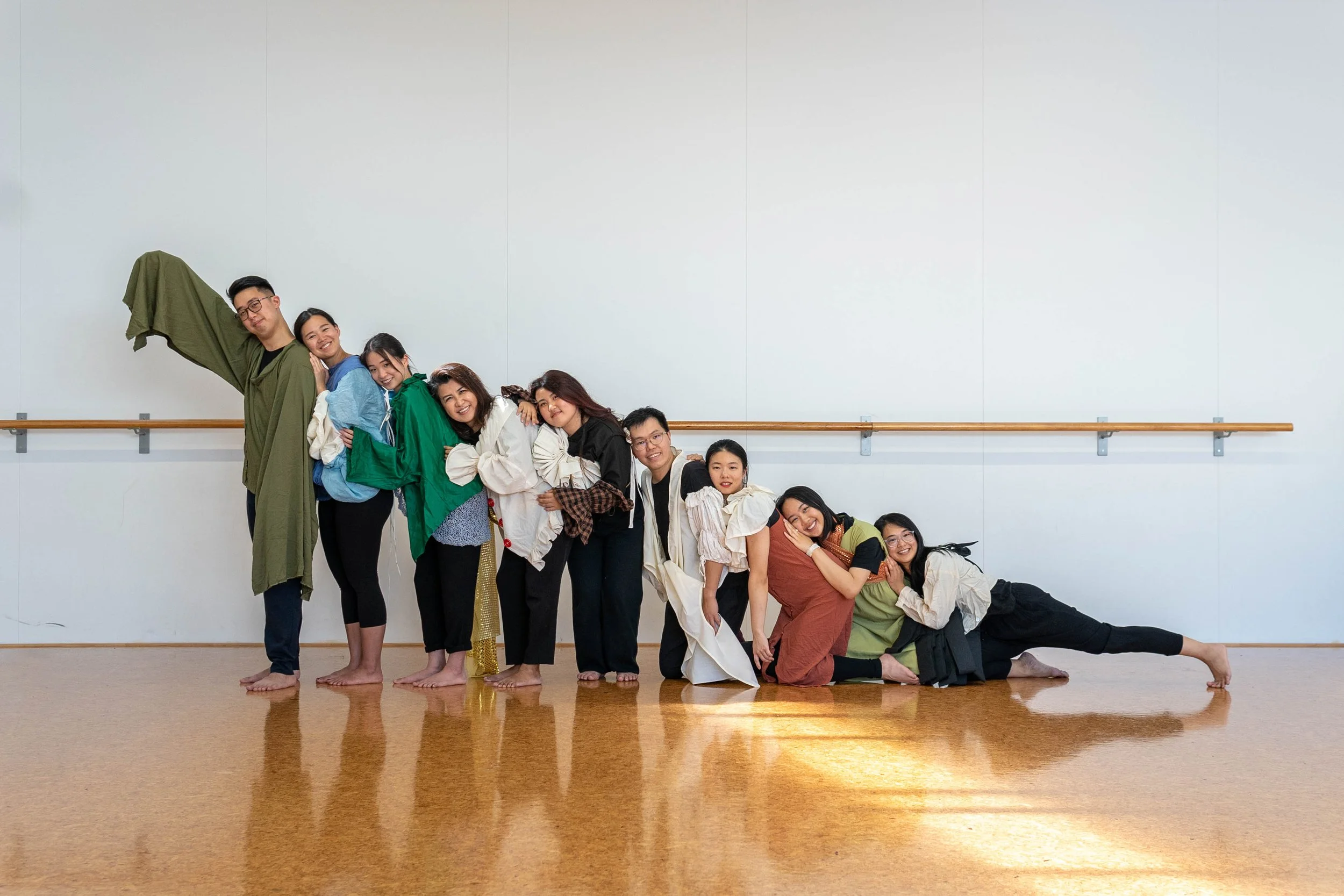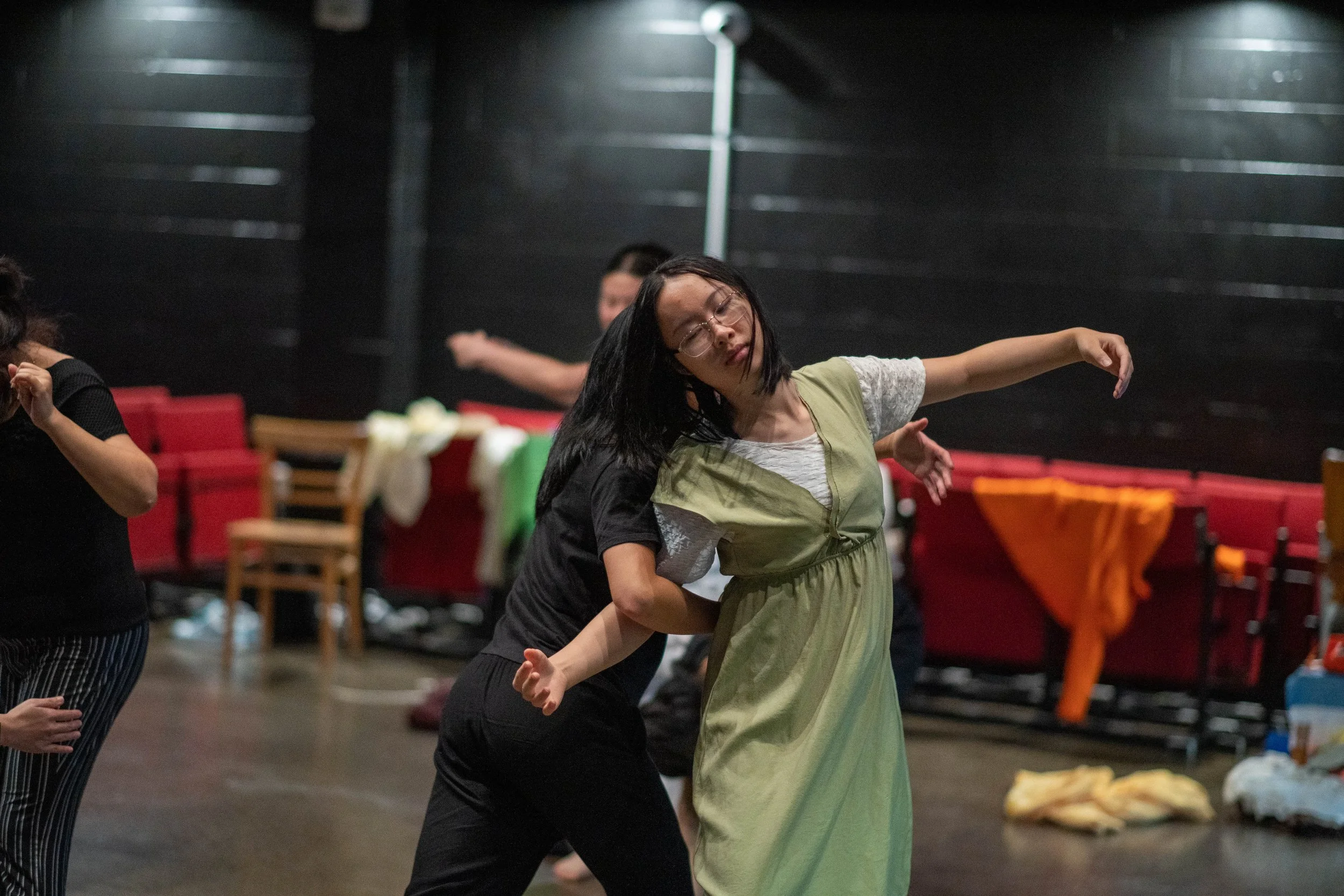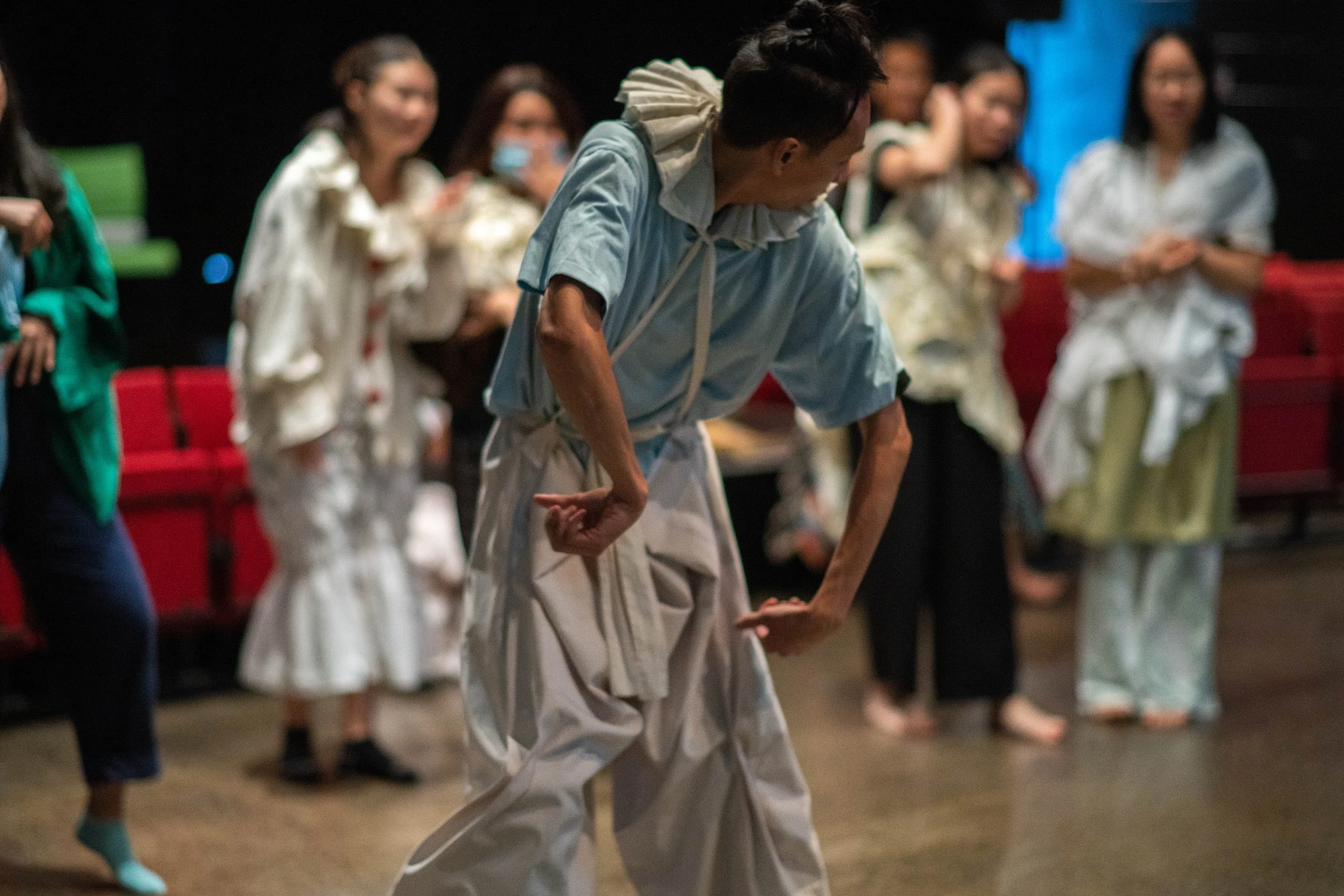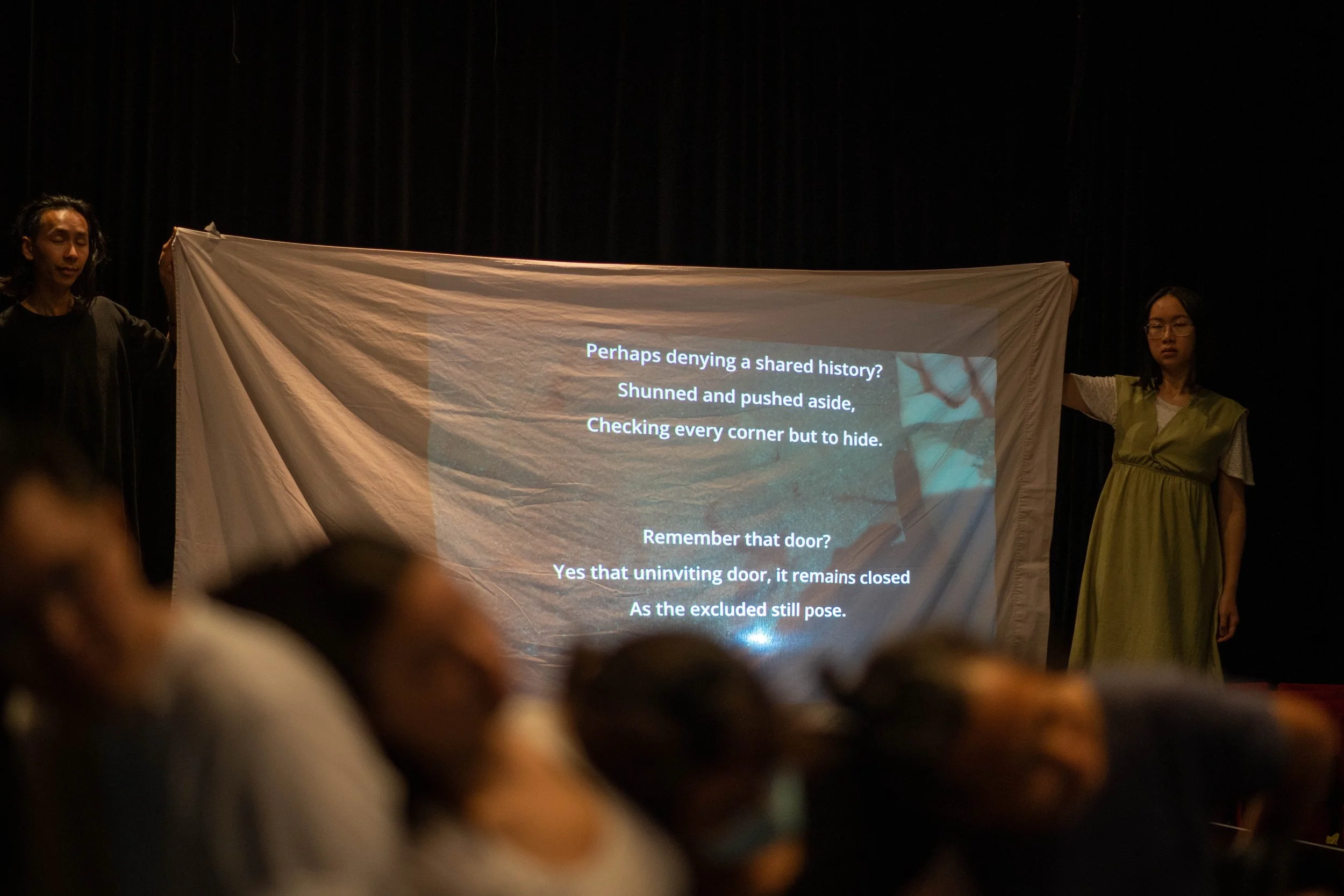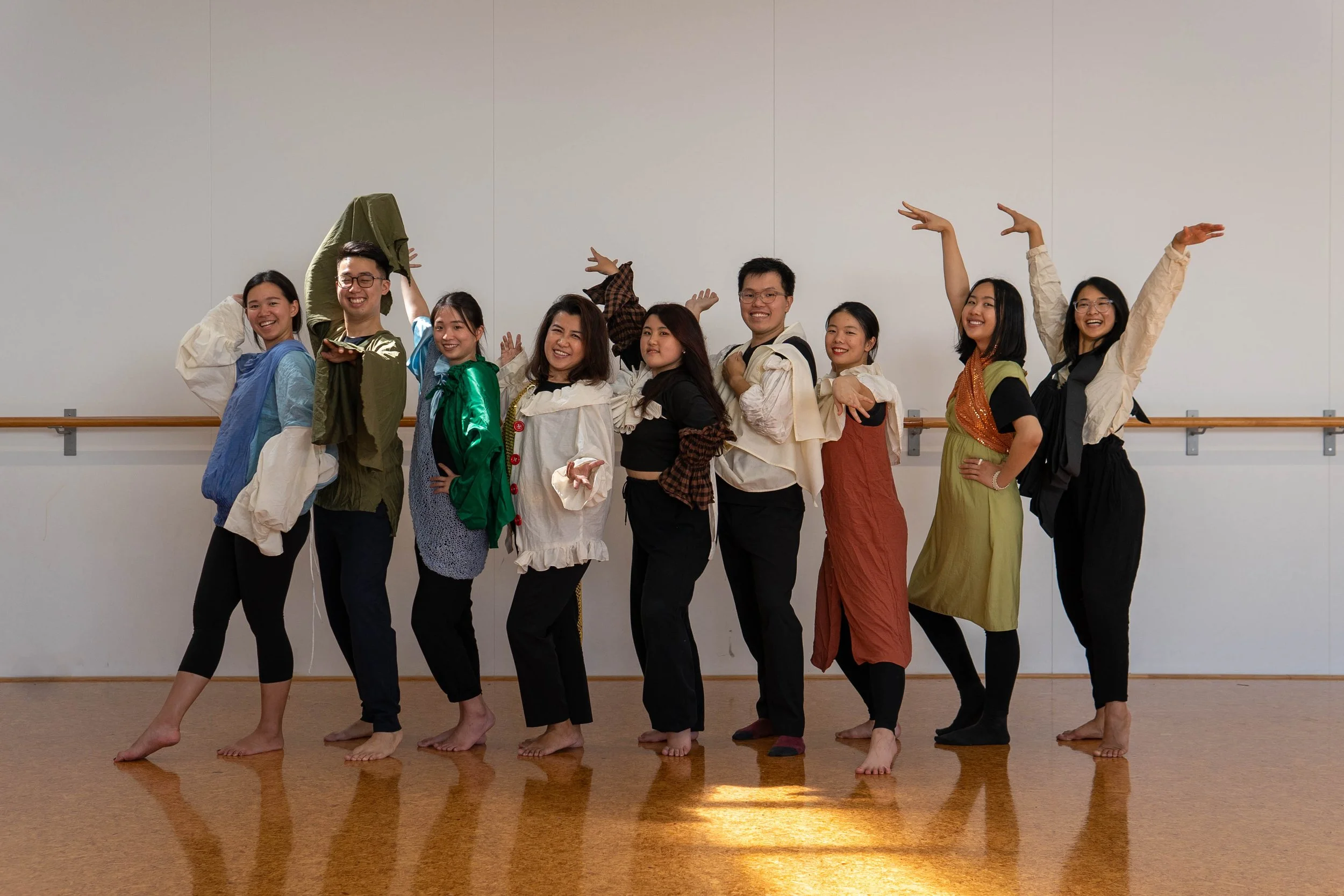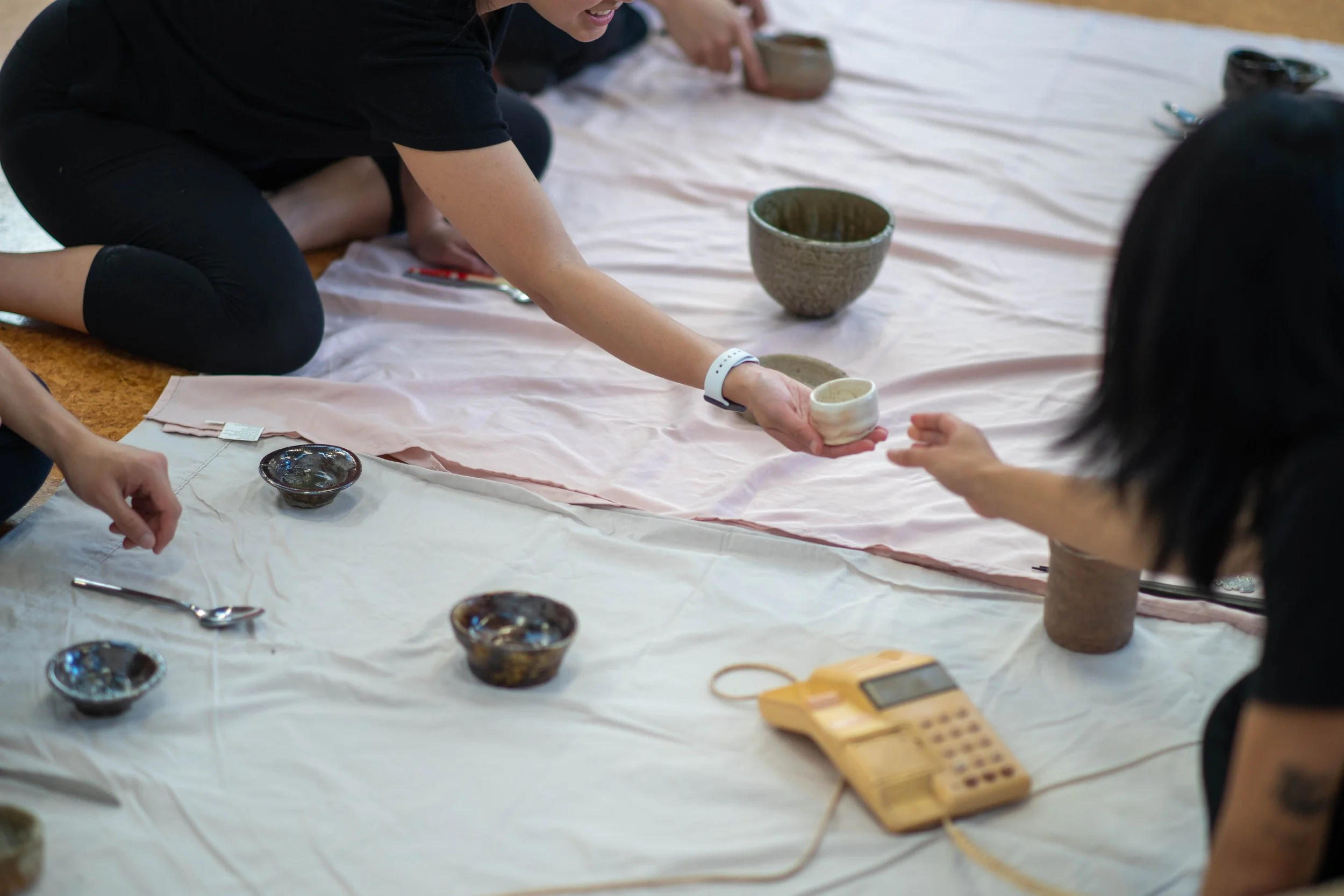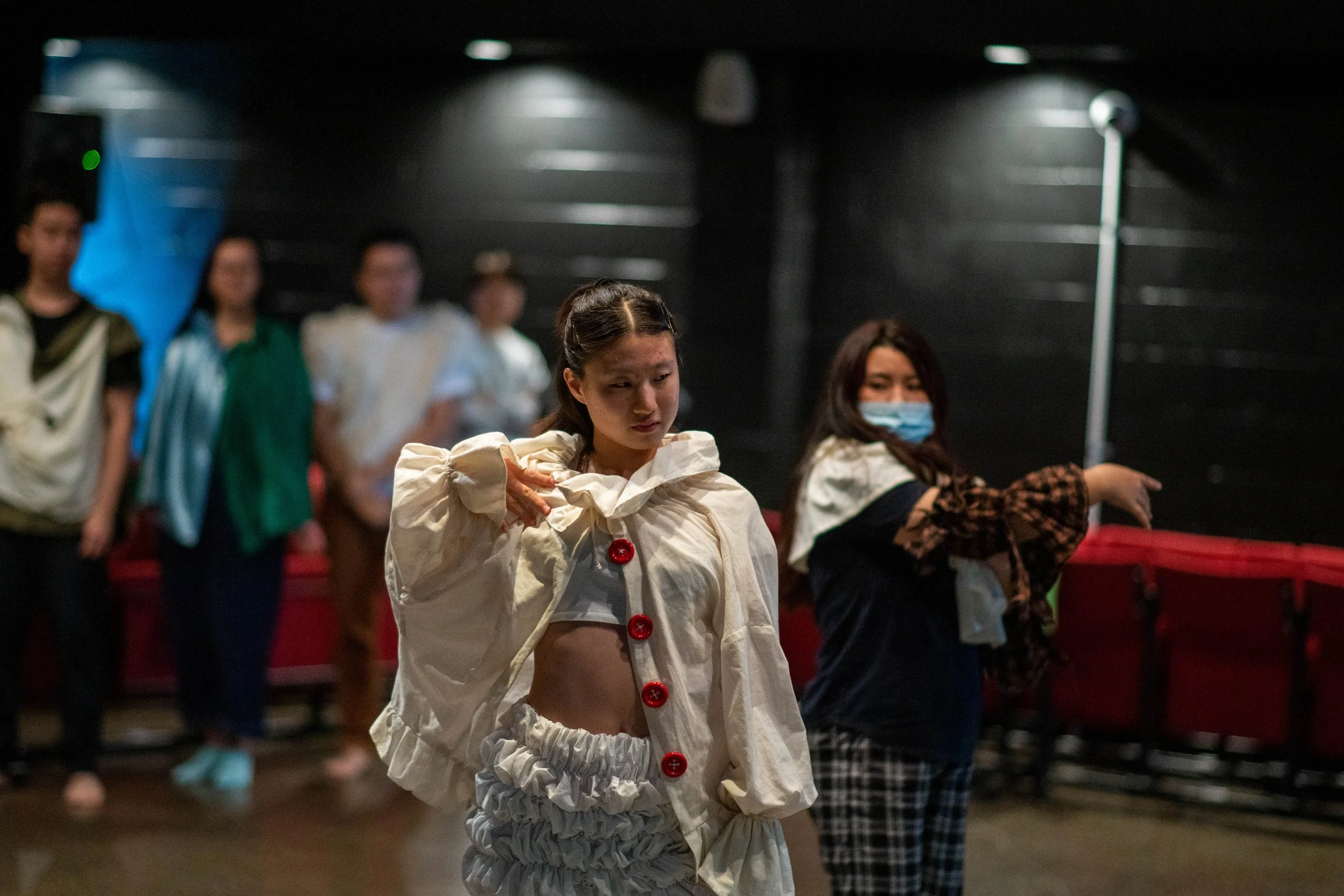INTERVIEW: I Don’t Wanna Dance Alone
08.04.2023 at Vincent St PopUp
Jang Huddle presents a community contemporary dance development exploring themes of community, intergenerational dynamics and empowering the inner child. I Don’t Wanna Dance Alone is about how everyone can dance. The work celebrates the joy of movement and connection through an all ages, all Asian cast of 12 people from diverse dance backgrounds.
Rat World visits one of the rehearsals to chat with facilitator, Cindy Yunha Jang-Barlow, and cast members, France Tan and Jiwoo Yeam. We talk about the importance of community contemporary dance, providing an inclusive all-ages space for people, and bridging the gap between community audiences and arts industries.
Chat with Cast Members: France Tan and Jiwoo Yeam
Rat World: Who are you and what do you do on a daily basis? Are you a dancer? Do you have a background in dance or not really?
France: My name is France, I come from the Philippines. I did a little bit of hip hop way back in high school. In uni, I did some dance sports, like cha-cha and samba. But on a day-to-day basis, I do office work. It’s been almost eight years since I've been on a stage to do dancing and it feels really good to have a creative output again.
Jiwoo: I'm Jiwoo Yeam and I’m a student. I have some experience in dance. I love contemporary and jazz styles. I just really love creating and learning movement. Dance is a really great output for me to express my feelings.
What drew you both to this project?
Jiwoo: Community, to be honest place. Finding a place where people could connect. Also, something that wasn't too serious - just a way to move and connect with different people.
France: For me, it was more having that itch to find a creative outlet again. When I joined, it felt like I had found a community.
That’s so cool. I wanted to ask what you have taken away from this project? How has it added to or changed your perspective of dance, or even your daily life?
France: We get too caught up with the things that we have to do - work, study and things like that. Sometimes we forget that inside everyone, there’s a creative aspect that wants to manifest itself. It’s important, especially for mental health, for people to be more aware of what they’re capable of and how they can feel good about themselves.
Jiwoo: For me, it’s been very much about moving how I want to, instead of how I feel like I should have to.
How do you feel like when you're dancing as part of this piece?
France: I’ve never tried contemporary dance before, so it feels new. But it also does make me feel more connected to my own body. There’s this unspoken teamwork, wherein you don’t really talk to each or tell anyone how to do something – We are all just putting in our own effort and that brings out the best in everyone.
Jiwoo: Yea, it's definitely a refreshing atmosphere. Especially because the work is called, I Don’t Wanna Dance Alone, it really shows the connection between different people. We haven't known each other for a very long time, but the way we have been able to connect in such a short time is really special.
Is that what you want audiences to take away from this work?
Jiwoo: Yea, I really want the audience to see this connection through dance. The way that we were able to connect in that short amount of time is really special.
France: I think ‘community’ is the best word that we can put into this show - Somewhere you belong, somewhere you feel safe. And especially with the title, it’s like, you don't really have to be so technical. Dance is for everyone! Everyone should be happy and comfortable and confident with themselves. That's one of the biggest takeaways we can give to our audience.
Jiwoo: Definitely.
A lot of this show talks about rediscovering childlike wonder and reconnecting to your child self – how do you feel this has manifested in the dance?
France: One of the things that comes to mind is the importance of play in our rehearsals. When we start out, there’s music, and the task is to just go with the music and do what you feel like doing. We end up playing around with our own movements and I think that brings out something really special.
What do you feel Asian audiences in particular can take away from this piece?
Jiwoo: There’s a really cool dinner table scene that I feel connects with a lot of the cultural aspects of being Asian.
France: I think one of one thing they can take away is seeing Asian faces on stage. It’s not every day you see them in movies, and even less so in the dance industry. So, I hope that this can spark some feeling in the Asian audiences that they can be a part of this.
Jiwoo: And just seeing Asian people in the wider arts industry as well. I feel that this will give inspiration to other young Asian people, myself included.
Is there anything else you want to say or speak to about the piece or your experiences with each other?
Jiwoo: It's been a different experience. I approached this without many expectations and it really pushed me out of my comfort zone. It’s been really amazing.
France: Yea, it’s been great. We get so caught up in other things and we don’t spend enough time on ourselves, discovering what we are capable of. It’s nice to regain the memory of being happy and comfortable in your own skin.
Chat with Facilitator: Cindy Yunha Jang-Barlow
Rat World: Who are you and what do you do?
Cindy: My name is Cindy Yunha Jang-Barlow I run my own collective called Jang Huddle. I always say that we are a huddle and whoever is in the huddle is always welcome to come back to the huddle. I mainly focus on community workshops, as well as events, performing, and creating choreography. My background is contemporary dance, so I bring in a lot of that with my work. I love having multidisciplinary aspects like theatre and dance. I think dance is the best tool to bring in so many different elements: music, spoken word, design. So, I Don’t Wanna Dance Alone is not just a dance show, there’s so many more layers to it.
That’s amazing. I was talking to one of the dancers and they brought up a dinner scene which sounds so interesting.
Cindy: Yeah, we have some theatrical moments, as well as dance, that are all improvised. I really like working with improv because there’s a freedom to it.
I wanted to ask what the background was behind this project and this work? Where did it stem from for you?
Cindy: It came from my love for community dance. I've taught with older adults and children with disabilities, so I've taught in a wider context with different people. And I really wanted to bring my love for community dance and contemporary dance together. I always felt so alone being an Asian choreographer and an Asian dancer in a contemporary dance space. I can count on my fingers, probably less than 10 people around here that are Asian dancers. I wanted to change that. I wanted new audiences, and I wanted new people to experience contemporary dance in a community way, particularly Asian audiences. But why would they come to a show if there’s no real connection? How can we make this accessible, not only for people watching it, but for people wanting to be a part of it too? I really wanted to do workshops and create a development work out of these workshops, so I just went around East Auckland, North Shore, Central, and did heaps of workshops for a few months. Then I asked the participants if they wanted to be a part of a show.
I like the way that you've done it with workshops first and getting people involved, rather than just declaring an idea to people.
Cindy: They need to see what they're gonna be a part of. The workshops were very inclusive, and I feel like people really liked the freedom of it. It’s honestly hard to explain community contemporary dance to someone who hasn’t experienced it before. But, when we did the call out, we ended up having quite a lot of interest – around 20 people reached out to be part of the show! I initially budgeted for only six people, but I didn’t want to turn anyone away, you know? That wasn’t part of the ethos. So, I thought, if we have 20, then we will make 20 work. I mean, it’s pretty fantastic that the interest was so high, but it also shows that there’s a need for this sort of stuff in the community. There aren’t many beginner contemporary dance classes and there are so many barriers to get started. So, we started with 20 people but because of scheduling things, we are down to 12 – which is still awesome.
That’s amazing! Jumping off of this, how are some ways you have fostered that sense of community? I’m really not a dancer, and am one of those people that would be terrified to dance on stage, but you’ve created such a beautiful, open space. Just watching these rehearsals it’s so clear how safe and comfortable everyone feels. How did you go about creating this atmosphere?
Cindy: Usually if you go to a dance class, there will be a teacher and a mirror in front of you, so you can always see yourself in the mirror. It’s quite a lot because you compare yourself to the teacher, to what you look like in the mirror, and to the people around you. In contrast, we always start off in a circle and check in with each other, asking how everyone is. I always encourage a stretch and a movement as well. So, already we are breaking those barriers and opening up for people to share how they’re feeling or what’s been going on in their week. It’s about really caring for each other in the space. Also, I really like to foster creativity and improvisation. Instead of teaching a specific movement, I get everyone to work on ‘tasks’. For an example, I was working on a runway-style pageant scene and I wanted everyone to be more confident in their movements - but how do you make that happen? You can’t just tell people to be more confident! So, we worked on different tasks that led up to that confidence – like walking with a partner instead of starting out on your own. It’s never a comparison model and there’s no hierarchy. We bring everyone in and figure it out together.
Yea, and I can really see that. Truthfully, I was surprised at how comfortable everyone felt, particularly with the variety of ages and dance backgrounds.
Cindy: Yea, it’s really special. A lot of them have never performed or danced before.
And what can audiences expect when they come to the show? What do you hope for them to get out of the performance?
Cindy: The main themes are around intergenerational communities and just moving for the sake of moving! It’s breaking down that elitist environment. Also, empowering the inner child. Just personally, coming from such a toxic dance studio, this whole process has been a healing journey for me. I was always told I wasn’t good enough to be in certain shows or to even be a dancer. I wanted to create a space that really was safe and welcoming for everyone to give dance a go. I feel like there will be two main audiences – friends and family of the cast members who don’t really go to theatre or dance shows very much; and people from within the arts scene. I want to bridge the gap between these two audiences. How can we make something that’s relatable, but also balances the contemporary aspect for arts audiences?
I think it’s so cool that you're bridging that gap between the wider community and the arts industry. It can be really easy to get stuck within the industry and become unaware of what the community actually needs.
Cindy: I hope that this can create more opportunities for audiences to get involved in community theatre groups and dance works. I feel that we really lack that bridging of audiences. When I created my first show, it was about my heritage as a 1.5 generation South Korean and I was exploring the sociopolitical conflict between North and South Korea. And I wanted more people from my community – from the Korean community - to see the work, but it was hard to just hit people up and explain why they should see a contemporary dance show. I just want to make it easier for friends and family who haven’t been around these sorts of shows to come along.
You talk about intergenerational dynamics a lot and I wanted to ask how this theme manifested, not only in the performance itself, but also in the methodology and practice behind the show.
Cindy: There is a lot of ableism in dance and I really wanted to show that age or ability to dance doesn’t matter. Whatever your background, you can still dance! To me, it needed to be an all ages cast because I wanted to widen the audience. How can people relate to a show if they aren’t represented? So, it was important for people to see themselves in the cast. With the generational themes, we play with a lot of ideas about passing down – not only the good things, but the traumatic things too. Also, generational relationships formed really naturally amongst the cast, like Ming just said, “Call me auntie”!
Can you speak a little bit about the costumes I have been seeing everywhere? They look amazing!
Cindy: They’re from Glo, our costume designer. She’s studying fashion in Wellington at the moment, but they’re amazing – She lent us all these wonderful pieces that really highlights the wacky world that we’ve created. And as soon as everyone tried the costumes on, people immediately changed into their character. The costumes allowed people to feel like someone else, and to really connect with the creative aspects of the show.
And Rewind Fields is doing the music for the show right?
Cindy: Callum has been a huge part of this show, even prior to creating the movements. I really gain inspiration from music – movement and music go hand in hand so much. It’s been a beautiful process hearing their original compositions for the show. I had my first experience dabbling in songwriting too, so that was really fun!
When and where can people see the work?
Cindy: There are four shows from the 20th to the 22nd April: Thursday night, Friday night, Saturday matinee, and Saturday night. There are extra performances as well, like on Thursday night there will be a Q&A with the dancers, and on Friday night Jeff’s band Goodspace will be playing some opening music. The Saturday matinee is intended for the older generation and families wanting to come out in the afternoon. On Saturday night, we will have my good friends DJ KC and CARU DJing as well for a huge dance party for everyone to come and enjoy!
Any last comments?
Cindy: I don’t want to just encourage people to come see this show, but also to think about how we can keep creating work with the community and for the community. Because it’s so special to gain these connections with everyone. Like, every rehearsal is so much fun and we probably crack up every single time about something! It’s just the joy of moving together after so many years of…nothing. Yea. It’s special.
■
I Don’t Wanna Dance Alone will be on from 20th April - 22nd April at the Factory Theatre, Onehunga. Grab your tickets here!
Facilitated by: Cindy Yunha Jang-Barlow and choreographed with the performers
Original soundtrack by: Rewind Fields


